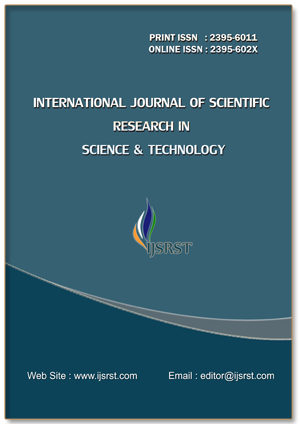Effect of Chopped Fibres Addition on the Behaviour of a New Textile Reinforced Concrete Under Flexural Loading
Keywords:
Textile Reinforced Concrete, Glass fibre, Choppedfibres, Bending, Compression.Abstract
Advances in the construction manufacturing have led to the development of innovative structural systems to reduce the structures weight. Accordingly, Textile Reinforced Concrete (TRC) as a technology that uses fibre reinforcement grids for strengthen concrete structures, notably glass and carbon fibres was introduced. Indeed, researchers have integrated these fibres within the concrete matrix to reduce cracking and improve flexibility. Compared to traditional concrete reinforcement methods, TRC offers several advantages, notably high corrosion resistance and flexibility. In this respect, the present work presents the results of an experimental study on the behaviour of high - performance mortar specimens reinforced by glass fibre grids. The effect of short glass fibres addition with 0.25, 0.5 and 0.75 was deeply studied under axial compression and four-point bending. The obtained results showed that the addition of short fibres within the mortar significantly improves the performances of the TRC, especially the structural ductility.
References
- M. Alma’aitah and B. Ghiassi, “Development of cost-effective low carbon hybrid textile reinforced concrete for structural or repair applications,” Constr. Build. Mater, vol. 341, no. January, p. 127858, 2022, doi: 10.1016/j.conbuildmat.2022.127858.
- A. Alatawna, Y. Rahamim, C. Hartig, A. Peled, and O. Regev, “Self-healing of the textile-reinforced concrete: Additives and coatings,” Constr. Build. Mater, vol. 364, no. November 2022, p. 129930, 2023, doi: 10.1016/j.conbuildmat.2022.129930.
- Kalaimathi, R. P. Thangaraj, and B. Shanmugam, “A review paper on mechanical properties of flexural and impact test on textile reinforced engineered cementations composites,” Mater. Today Proc., vol. 50, pp. 2160–2169, 2021, doi: 10.1016/j.matpr.2021.09.443.
- P. Kapsalis, T. Tysmans, D. Van Hemelrijck, and T. Triantafillou, “State-of-the-art review on experimental investigations of textile-reinforced concrete exposed to high temperatures,” J. Compos. Sci., vol. 5, no. 11, 2021, doi: 10.3390/jcs5110290.
- M. Engineering, Textile Reinforced Cement Composites. 2020. doi: 10.3390/books978-3-03928-331-6.
- A. Alatawna, Y. Rahamim, C. Hartig, A. Peled, and O. Regev, “Self-healing of the textile-reinforced concrete: Additives and coatings,” Constr. Build. Mater. vol. 364, no. November 2022, p. 129930, 2023, doi: 10.1016/j.conbuildmat.2022.129930.
- F. Bouzeboudja and C. Ali Ahmed, “Modeling of the interface between the concrete and the fibres grid in concrete slab,” J. Build. Mater. Struct, vol. 5, no. 1, pp. 137–146, 2018, doi: 10.34118/jbms.v5i1.52. Choppedfibres
- M. Lee, J. Mata-Falcón, and W. Kaufmann, “Influence of chopped glass fibres and spatial features on the mechanical behaviour of weft-knitted textile reinforced concrete elements in bending,” Constr. Build. Mater, vol. 344, no. June, 2022, doi: 10.1016/j.conbuildmat.2022.128167.
- M. Zhang and M. Deng, “Tensile behaviour of textile-reinforced composites made of highly ductile fibre-reinforced concrete and carbon textiles,” J. Build. Eng., vol. 57, no. April, p. 104824, 2022, doi: 10.1016/j.jobe.2022.104824.
- H. H. Pham, N. H. Dinh, S. H. Kim, S. H. Park, and K. K. Choi, “Tensile behavioural characteristics of lightweight carbon textile-reinforced cementitious composites,” J. Build. Eng., vol. 57, no. April, p. 104848, 2022, doi: 10.1016/j.jobe.2022.104848.
- M. Kurban et al. Investigation of the flexural behaviour of textile reinforced concrete with braiding yarn structure Construction and Building Materials 334 (2022) 12743
- M. Halvaei, M. Latifi, and M. Jamshidi, “Study of the microstructure and flexural behaviour of cementitious composites reinforced by surface modified carbon textiles,” Constr. Build. Mater, vol. 158, pp. 243–256, 2018, doi: 10.1016/j.conbuildmat.2017.10.044.
- A. M. Ibrahim, S. M. Abd, O. H. Hussein, B. A. Tayeh, Hadee M. Najm, and S. Qaidi, “Influence of adding short carbon fibres on the flexural behaviour of textile-reinforced concrete one-way slab,” Case Stud. Constr. Mater., vol. 17, no. August, p. e01601, 2022, doi: 10.1016/j.cscm.2022.e01601.
- S. Medjmadj, A. Si Salem, and S. Ait Taleb. “Experimental Behaviour of Plaster/Cork Functionally Graded Core Sandwich Panels with Polymer Skins.” 2022-Construction and Building Materials 344.
- F. BouzeboudjaA. Si Salem. “Experimental Investigation on Fl Exural Behaviour of Textile-Reinforced Concrete: Effect of Reinforcement Type and Dune Sand Addition.” World Journal of Engineering, 2023Vol. ahead-of-print No. ahead-of-print. https://doi.org/10.1108/WJE-05-2023-0139
- S. Ait Taleb, A. Si Salem, and K. Ait Tahar. “Experimental and Theoretical Modeling Coupled to a Reliability Approach for Flexural Failure Prediction in Hybrid Composite Beams.” Asian Journal of Civil Engineering 202021(3): 495–504. https://doi.org/10.1007/s42107-020-00223-5.
- S. Ait Taleb, A. Si Salem, and K. Ait tahar.“Behaviour of a New Graded Beam Reinforced with Externally Bonded Composite Sheets: Theoretical and Experimental Studies.” European Journal of Environmental and Civil Engineering 201721(9): 1171–85.
- S. Djenad, A. Si Salem and M. A. Bouzidi. “Performance and compressive axial behaviour of new design partially-confined concrete columns with encased-FRP/Grids strips” Asian Journal of Civil Engineering. 23, pages801–815 (2022) https://link.springer.com/article/10.1007/s42107-022-00450-y
- S. Djenad, S. Ait Taleb, and A. Si Salem. “Finite Element Modeling of Partially-Confined Concrete and RC Columns with Embedded Hexagonal-FRP Strips under Axial and Horizontal Loading.” Structures 202354: 369–85. https://doi.org/10.1016/j.istruc.2023.05.065.
Downloads
Published
Issue
Section
License
Copyright (c) IJSRST

This work is licensed under a Creative Commons Attribution 4.0 International License.

